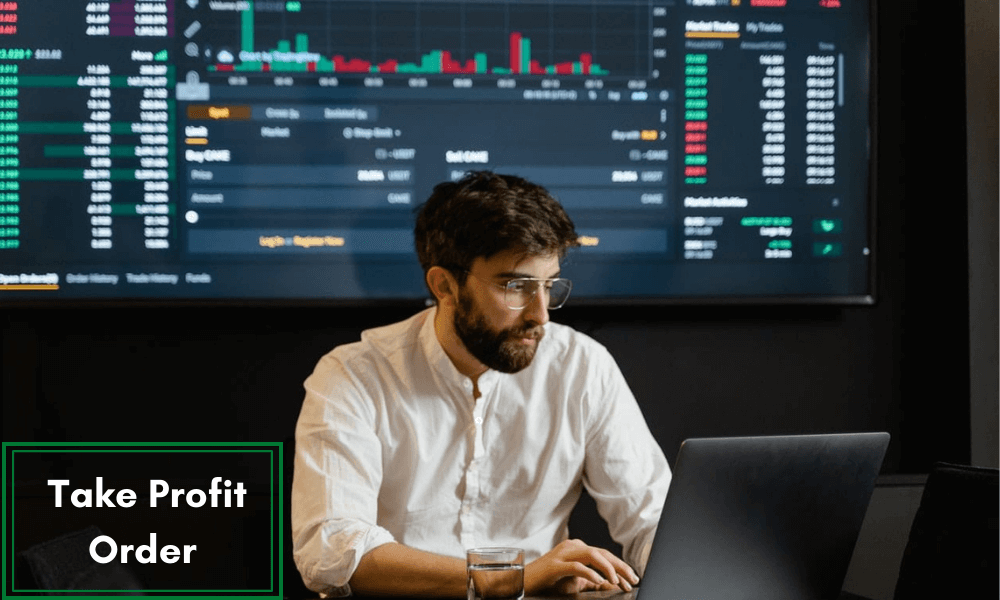Take Profit (ТР) is a pending order that directs the broker to close a trade once the asset'...

Take Profit (ТР) is a pending order that directs the broker to close a trade once the asset's price becomes equal to the value preset by the trader. Let me explain the Take Profit meaning:
It works as follows: the trader places an order to buy and buys an asset at its current price on the trading platform. He also sets a TP value at the current price + 20 points in the order.
Once the price level reaches that value, the trade will be closed automatically. A TP order remains active until the price reaches the preset value.
The trader can place TP orders in the following situations:
To open a trade if the trader is absent. For example, you suppose the price will reach a necessary level at night, but it might then have retraced to the previous level by the morning.
So, you set Take Profit and go to bed. The trade will be closed automatically upon reaching the predetermined level. In the morning, you have your trade closed with profits.
To close a trade upon touching the level. This technique is often used in scalping, where even milliseconds matter. The trader supposes that the price line will reach a certain level and then pull back.
He or she understands that closing a position manually might take too much time, and the price might go in the opposite direction too quickly upon touching the level.
So, a Take Profit order is set to exit the market with the most profit, and a position is closed automatically once the price touches the predefined level.
To observe a risk management policy and trading psychology. Emotions and greed can urge traders to keep profitable trades in the market longer in the hope of higher profits.
As a result, the trader misses a price reversal moment and closes the trade at a less attractive price. Besides missed profits, some traders feel bad about that. Take Profit orders do cut down prospective earnings, but they also protect you against reversal risks and reduce tension.
In the Forex market, Take Profit orders are always placed above the Bid price for long positions and below the Ask price for short positions.
Attention! There are two prices in the market: Bid — sell price, and Ask — buy price. The Ask price is always higher than the Bid price. Candlesticks are formed as follows:
- High is the maximum Bid over a certain period.
- Low is the minimum Bid over a certain period.
So, Min Ask will equal Low plus spreads, and Max Ask will equal High plus spreads.
- When buying, Take Profit is triggered when the Bid price reaches the preset value.
- When selling, Take Profit is triggered when the Ask price reaches the preset value.
The platform's charts display only the Bid price as a default parameter. Remember to price in spreads when setting your TP order.
How Take Profit works. Take-Profit Order Example
A TP market order can work automatically at the preset level without the trader's participation. How does Take Profit work? Here’s an example.
Open the BTCUSD's chart. As our goal is to see a take-profit order example, we'll take a short M5 time frame. Open the order window and set a target profit amount at 5 USD, which corresponds to 43,647.90.
Open the trade. Wait for the price line to reach the predefined level. The trade will close automatically upon reaching the TP value. Click on the trading history tab and check the closing price.
Take Profit Calculator
A Forex Take Profit Calculator is a tool that automatically calculates the TP order amount based on the Stop loss amount, opening price, and the % of trades closed by TP/SL limit orders.
In its turn, a Stop Loss level is calculated according to the risk management policy — trade volume, trade value, etc.
Example. A trading strategy results in 70% of loss-making trades closed by Stop Loss and 30% of profitable trades closed by Take Profit. Thus, we have:
0.7 * Loss > 0.3 * Profit!
However, for a trading strategy to work, the eventual total loss must be less than total profit. Thus, Take Profit must be at least 2.33 times (0.7/0.3) bigger than Stop Loss. Eventual slippages considered, the value should go up to 2.5 times. ( Continue reading the rest)